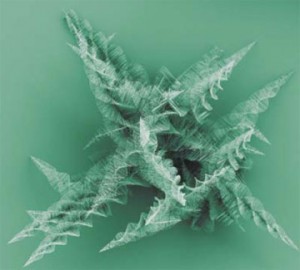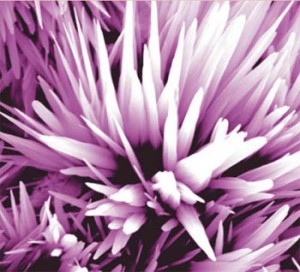The Dr. Strange movie (Dr. Strange in the Multiverse of Madness released May 6, 2022) has inspired an essay on physics. From a May 9, 2022 news item on phys.org
If you’re a fan of science fiction films, you’ll likely be familiar with the idea of alternate universes—hypothetical planes of existence with different versions of ourselves. As far from reality as it sounds, it is a question that scientists have contemplated. So just how well does the fiction stack up with the science?
The many-worlds interpretation is one idea in physics that supports the concept of multiple universes existing. It stems from the way we comprehend quantum mechanics, which defy the rules of our regular world. While it’s impossible to test and is considered an interpretation rather than a scientific theory, many physicists think it could be possible.
“When you look at the regular world, things are measurable and predictable—if you drop a ball off a roof, it will fall to the ground. But when you look on a very small scale in quantum mechanics, the rules stop applying. Instead of being predictable, it becomes about probabilities,” says Sarah Martell, Associate Professor at the School of Physics, UNSW Science.
…
A May 9, 2022 University of New South Wales (UNSW; Australia) press release originated the news item,
The fundamental quantum equation – called a wave function – shows a particle inhabiting many possible positions, with different probabilities assigned to each. If you were to attempt to observe the particle to determine its position – known in physics as ‘collapsing’ the wave function – you’ll find it in just one place. But the particle actually inhabits all the positions allowed by the wave function.
This interpretation of quantum mechanics is important, as it helps explain some of the quantum paradoxes that logic can’t answer, like why a particle can be in two places at once. While it might seem impossible to us, since we experience time and space as fixed, mathematically it adds up.
“When you make a measurement in quantum physics, you’re only measuring one of the possibilities. We can work with that mathematically, but it’s philosophically uncomfortable that the world stops being predictable,” A/Prof. Martell says.
“If you don’t get hung up on the philosophy, you simply move on with your physics. But what if the other possibility were true? That’s where this idea of the multiverse comes in.”
The quantum multiverse
Like it is depicted in many science fiction films, the many-worlds interpretation suggests our reality is just one of many. The universe supposedly splits or branches into other universes any time we take action – whether it’s a molecule moving, what you decide to eat or your choice of career.
In physics, this is best explained through the thought experiment of Schrodinger’s cat. In the many-worlds interpretation, when the box is opened, the observer and the possibly alive cat split into an observer looking at a box with a deceased cat and one looking at a box with a live cat.
“A version of you measures one result, and a version of you measures the other result. That way, you don’t have to explain why a particular probability resulted. It’s just everything that could happen, does happen, somewhere,” A/Prof. Martell says.
“This is the logic often depicted in science fiction, like Spider-Man: Into the Spider-Verse, where five different Spider-Man exist in different universes based on the idea there was a different event that set up each one’s progress and timeline.”
This interpretation suggests that our decisions in this universe have implications for other versions of ourselves living in parallel worlds. But what about the possibility of interacting with these hypothetical alternate universes?
According to the many-worlds interpretation, humans wouldn’t be able to interact with parallel universes as they do in films – although science fiction has creative licence to do so.
“It’s a device used all the time in comic books, but it’s not something that physics would have anything to say about,” A/Prof. Martell says. “But I love science fiction for the creativity and the way that little science facts can become the motivation for a character or the essential crisis in a story with characters like Doctor Strange.”
“If for nothing else, science fiction can help make science more accessible, and the more we get people talking about science, the better,” A/Prof. Martell says.
“I think we do ourselves a lot of good by putting hooks out there that people can grab. So, if we can get people interested in science through popular culture, they’ll be more interested in the science we do.”
The university also offers a course as this October 6, 2020 UNSW press release reveals,
From the morality plays in Star Trek, to the grim futures in Black Mirror, fiction can help explore our hopes – and fears – of the role science might play in our futures.
But sci-fi can be more than just a source of entertainment. When fiction gets the science right (or right enough), sci-fi can also be used to make science accessible to broader audiences.
“Sci-fi can help relate science and technology to the lived human experience,” says Dr Maria Cunningham, a radio astronomer and senior lecturer in UNSW Science’s School of Physics.
“Storytelling can make complex theories easier to visualise, understand and remember.”
Dr Cunningham – a sci-fi fan herself – convenes ‘Brave New World’: a course on science fact and fiction aimed at students from a non-scientific background. The course explores the relationship between literature, science, and society, using case studies like Futurama and MacGyver.
She says her own interest in sci-fi long predates her career in science.
“Fiction can help get people interested in science – sometimes without them even knowing it,” says Dr Cunningham.
“Sci-fi has the potential to increase the science literacy of the general population.”
Here, Dr Cunningham shares three tricky physics concepts best explained through science fiction (spoilers ahead).
…
Cunningham goes on to discuss the Universal Speed Limit, Time Dilation, and, yes, the Many Worlds Interpretation.
The course, “Brave New World: Science Fiction, Science Fact and the Future – GENS4015” is still offered but do check the link to make sure it takes you to the latest version (I found 2023). One more thing, it is offered wholly on the internet.


